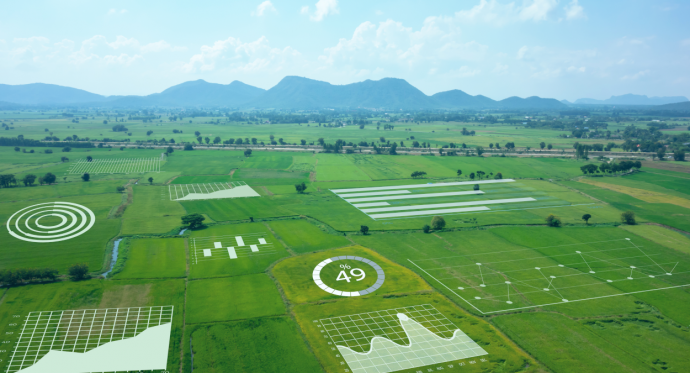Carmen Camacho* and Alexandre Cornet
- This article was originally published in the September 2021 edition of the 5 papers…in 5 minutes.

Every year, agriculture is responsible for a loss of 24 billion tonnes of fertile soil (UNCCD, 2017). This loss implies major risks in food security and crop sustainability worldwide. There is an urgent need to understand and foresee the impact of agriculture on soil fertility since food demand will keep increasing in the next decades, pushed by population growth.
In this regard, Camacho and Cornet develop in this theoretical paper a model to describe economic growth, taking into account the linkages between spatial locations and accounting for the diffusion of pollution in soils. In particular, this means that locations are linked not only through economic interactions but also through soil pollution. Indeed, pollution generated at one location will travel through porous soils and affect all other locations. In the text, Camacho and Cornet solve the problem of a policy maker whose aim is to maximize all individuals’ welfare, taking into account the following circle: how pollution is generated by the production of goods, how pollution travels in soils and how production is negatively affected by pollution. They provide with the explicit optimal trajectory for fertile soil and consumption. To find the best solution, the authors face two major mathematical challenges. First, the production factor, fertile soil, is naturally bounded by the amount of available land at each location. Second, and most interesting, at any moment in time the economy can be made of a polluted and a fertile regions separated by a(n invisible) frontier. Since pollution diffuses, the frontier can actually continuously change with time and so should the policy maker decisions.
The resulting optimal evolution in time of fertile soil transits through two distinct phases. In the first phase there is some polluted land everywhere, and fertile soil and consumption grow at the same constant rate at all locations. Eventually, some locations eradicate all pollution and the economy enters the second phase. Hence, in this second phase there is a clean region that has a better technology and/or has invested more in pollution abatement, with no pollution. Next to it, there remains a polluted region. And most interesting, clean locations stop absorbing pollution coming from the polluted area. Different long-term patterns can emerge. Eventually, the polluted region may actually never reach its potential maximum for fertile soil, and remain forever in a sort of environmental poverty trap. Camacho and Cornet show that specially after a pollution shock, policy makers should leave temporarily aside their optimal policies which discount heavily the far future and induce instead clean regions to help reduce overall pollution. Refusing to do so could optimally lead to an entirely polluted economy in the medium term.
………………..
References
Original title of the article: Diffusion of soil pollution in an agricultural economy. The emergence of regions, frontiers and spatial patterns
Published in: PSE working paper 2020-31
Available at: https://halshs.archives-ouvertes.fr/halshs-02652191v2
* PSE Member
